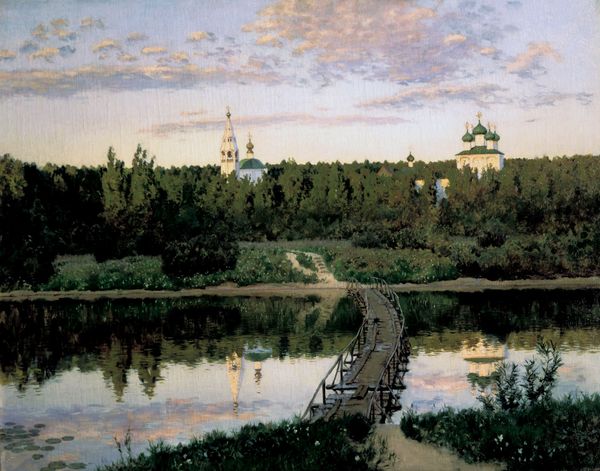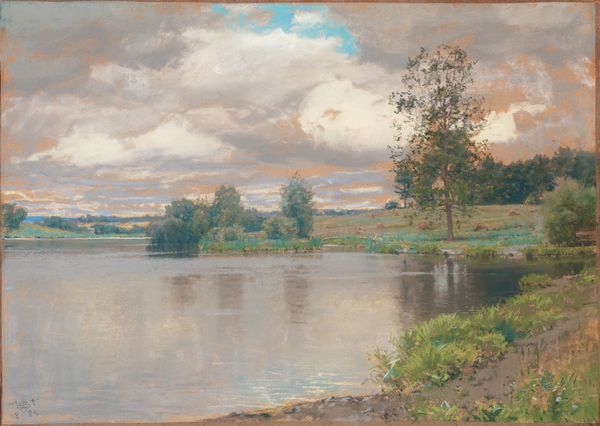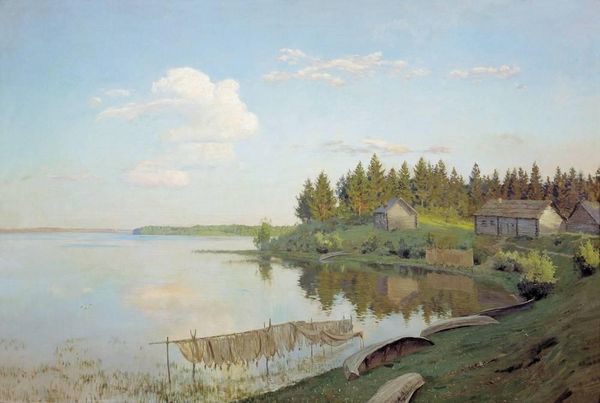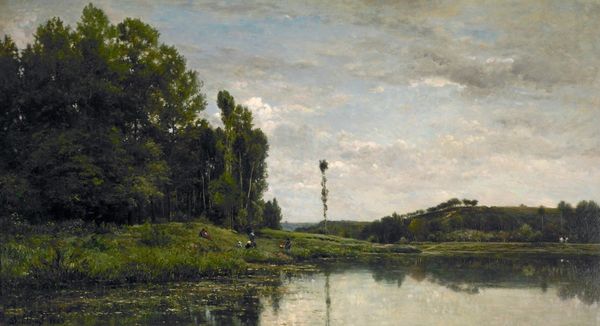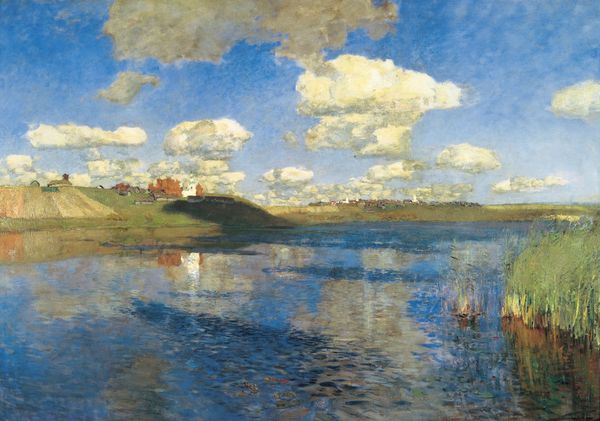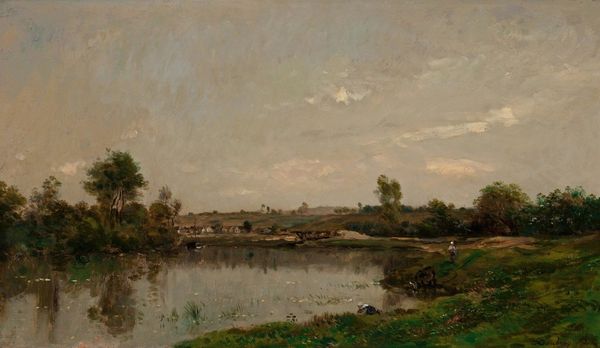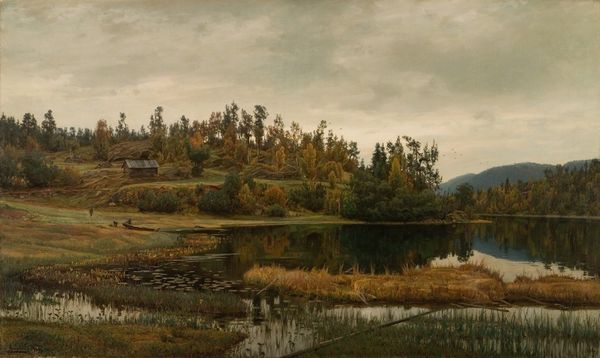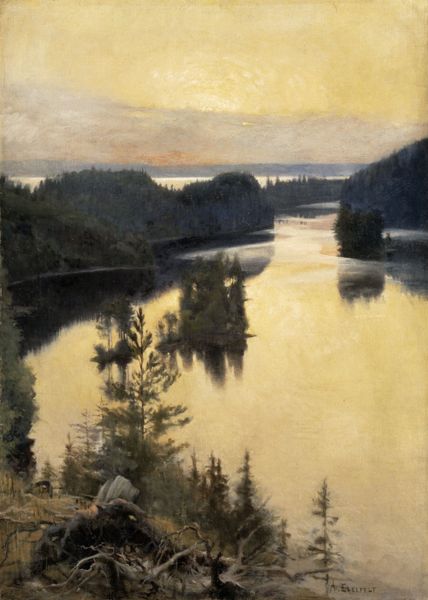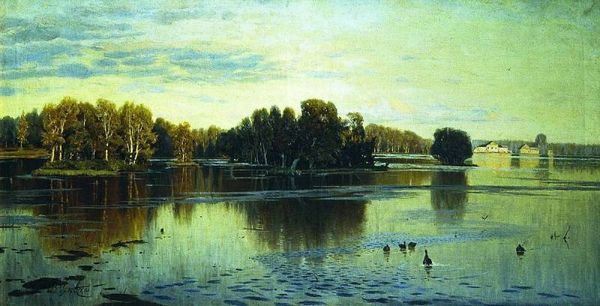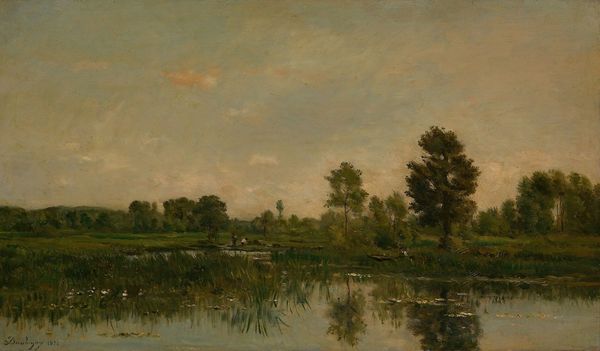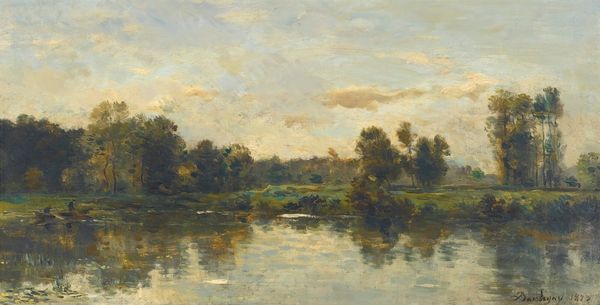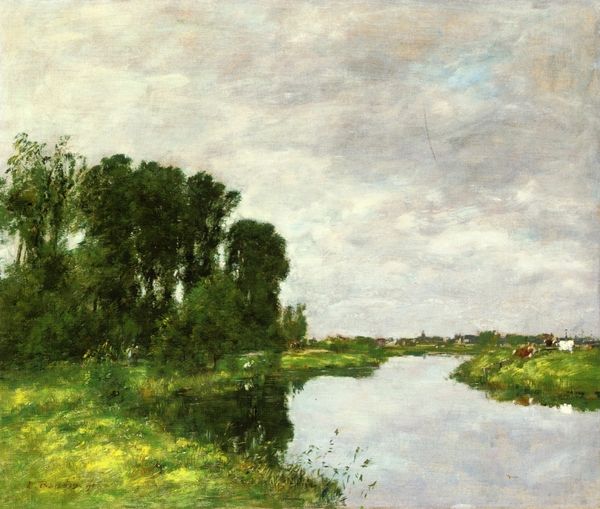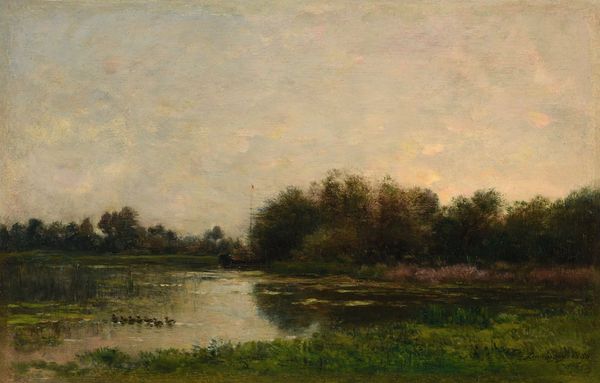
Dimensions: 87 x 108 cm
Copyright: Public domain
Curator: Look at this evocative painting; it's Isaac Levitan's "Vesper Chimes," painted in 1892. He captured it using oil paints. It now resides at the Tretyakov Gallery in Moscow. What are your first impressions? Editor: It's quite peaceful. The mirrored reflection of the architecture in the water gives it an otherworldly quality, as though Levitan has captured something sacred in this ordinary setting. Curator: Absolutely. I'd argue that this piece is intrinsically tied to the rise of Russian nationalism at the time, especially within the intellectual and artistic classes. We see this reflected in the subject of the orthodox church and the embrace of traditional Russian landscapes, moving away from western European artistic trends. Editor: Yes, the central placement of the monastery emphasizes a search for spiritual and national identity through the historical church. Notice how the dome’s cupolas mirror the surrounding trees. There's also the prominence of water. Is this symbolic too? Curator: Undeniably. Rivers are traditionally crucial to both the economic and symbolic identity of Russia. They literally function as its arteries but have also been linked to Russian concepts of motherland, destiny, and connection to both past and future. The figures in the boats appear to be deliberately moving toward a deeper connection to both land and tradition. It begs us to reflect on themes such as progress, heritage, and social direction within late 19th-century Russia. Editor: Levitan uses muted tones, reflecting in their stillness and reverence. Even the water’s surface remains unbroken by strong breezes. What appears natural hides much deeper symbolism that continues to speak to its Russian audience, beyond only artistic technique. Curator: Indeed, its layered meanings ask questions about national, political and individual spiritual evolution even today. It’s the kind of image that lingers in your mind long after you've looked at it. Editor: A testament to art that endures as more than just aesthetic but cultural and philosophical resonance, capturing that particular moment when Russia confronted its spiritual identity.
Comments
No comments
Be the first to comment and join the conversation on the ultimate creative platform.
